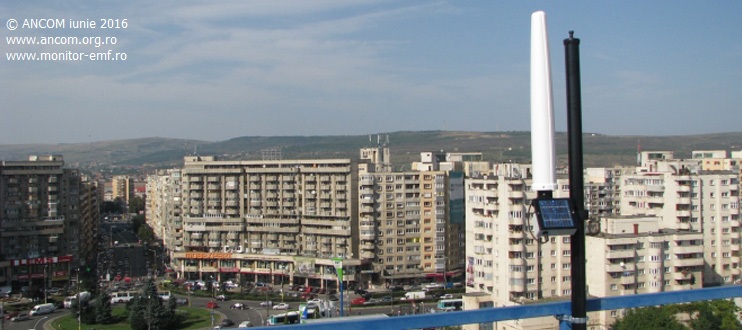Real-time EMF measurement results, available online
25.08.2016
Â

The National Authority for Management and Regulation in Communications of Romania (ANCOM) makes publicly available an online interactive map with measurements of the electromagnetic field generated by low- or high-frequency sources, such as radio/TV, GSM, UMTS, WiFi, WiMax stations or other transmitting-receiving equipment operating within the 100 kHz – 7 GHz range, performed by fixed sensors, as part of its annual measurement plan. The map is available on www.monitor-emf.ro.Â
Fixed measurements map
The map offers details on the place, time interval and electromagnetic field strength measured, expressed as absolute values and as percentages in reference to the regulated levels. ANCOM conducted the measurements in compliance with the European recommendations in the field (CEPT Recommendation ECC/REC/(02)04 on measuring non-ionising electromagnetic radiation (9 kHz – 300 GHz)). So far, the measurement results indicate that emission levels are well under the maximum levels provided by law.
The measurements in ANCOM’s map are performed by 50 fixed wideband monitoring sensors located in Bucharest and other 35 cities in the country. These permanently active sensors send measurement results to an information platform every 24 hours, being situated outdoors, in public areas that are close to clutters of electromagnetic field sources. Each sensor uses a isotropic (tri-axial) probe measuring the electromagnetic field strength in four frequency bands: 100 kHz - 7 GHz, 925 MHz - 960 MHz, 1805 MHz - 1880 MHz and 2110 MHz - 2170 MHz. Â
Mobile measurements map
Apart from the permanent measurement of the electromagnetic field strength using fixed sensors, ANCOM also performs measurements using mobile equipment, these results being available here, according to the Authority’s annual measurement plan.
Both fixed sensor measurements and mobile equipment ones are conducted exclusively in public areas. The Authority does not perform control actions and measurements upon third parties’ request. For measurements in other locations than those situated in public areas, requests should be directed to public and private entities (accredited by the Romanian Accreditation Association - RENAR), which performs such measurements, for a fee.
Radio spectrum monitoring
In the context of protecting legitimate use of the spectrum from harmful interference, ANCOM constantly conducts monitoring activities on the radio frequencies with non-governmental use, in order to verify compliance with the obligations provided in the licenses for use of radio frequencies and in the frequency assignment authorisations issued by the Authority, as well as to detect and remove unauthorized radio emissions.
Regulations and attributions
In Romania, exposure to electromagnetic fields is regulated by law, according to the practices adopted in the European Union. Thus, the Order of the Minister of Public Health no. 1193/2006 approving the Rules on limiting the exposure of population to electromagnetic fields ranging from 0 Hz to 300 GHz transposes Recommendation 1999/519/EC on the limitation of exposure of the general public to electromagnetic fields (0 Hz to 300 GHz), a reference document for all the EU Member States, endorsed by the Commission on Non-Ionizing Radiation Protection (ICNIRP).Â
In this context, the institutions under the Ministry of Health such as The National Institute of Public Health, are the entities enabled to interpret results from a public health perspective the results in ANCOM’s electromagnetic field measurement bulletins. According to the legal duties incumbent on ANCOM under Government Emergency Ordinance no.22 / 2009 on the establishment of the National Authority for Management and Regulation in Communications, approved by Law no. 113/2010, as amended and completed, the Authority’s activity is limited to technical analysis and expertise on the use of radio frequencies, in order to ensure radio electric compatibility of authorized radiocommunications stations and networks, to prevent harmful interference on the radio spectrum with non-governmental use.
Â


 top
top